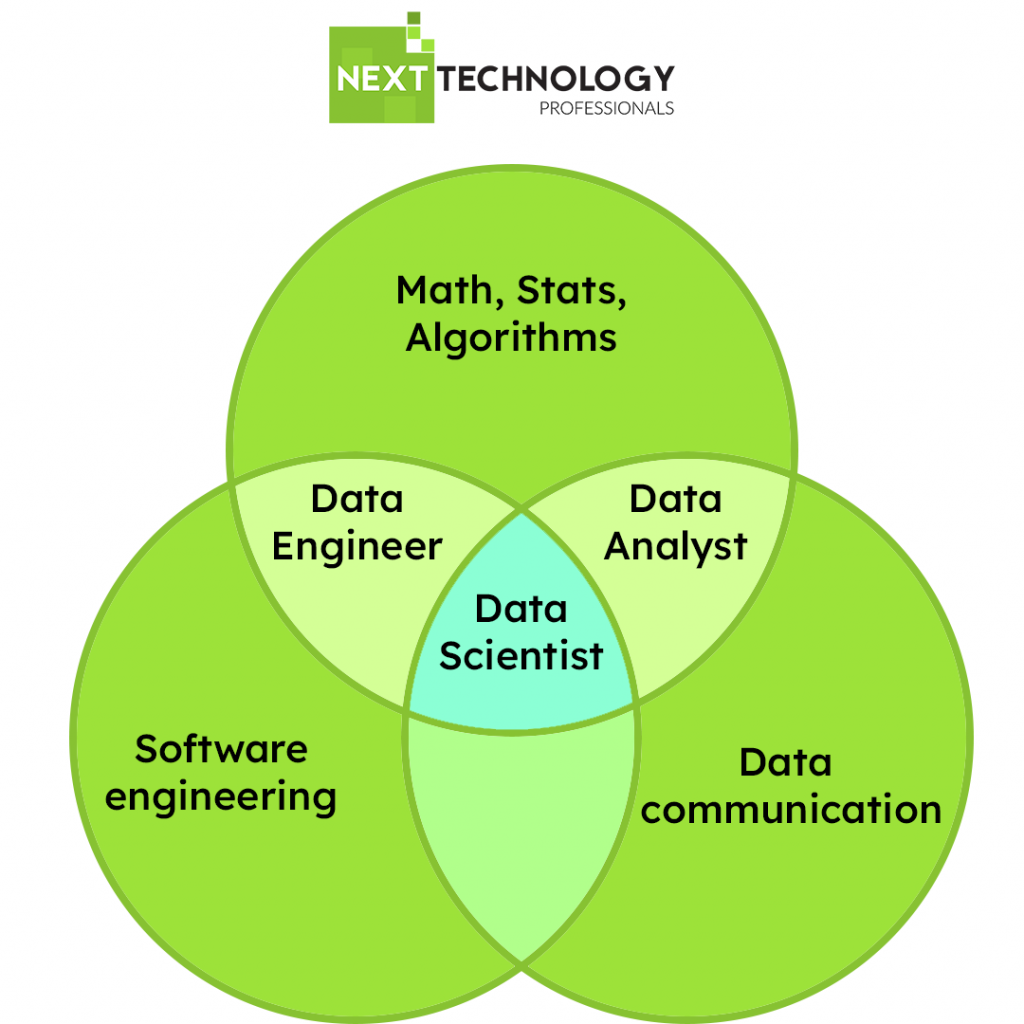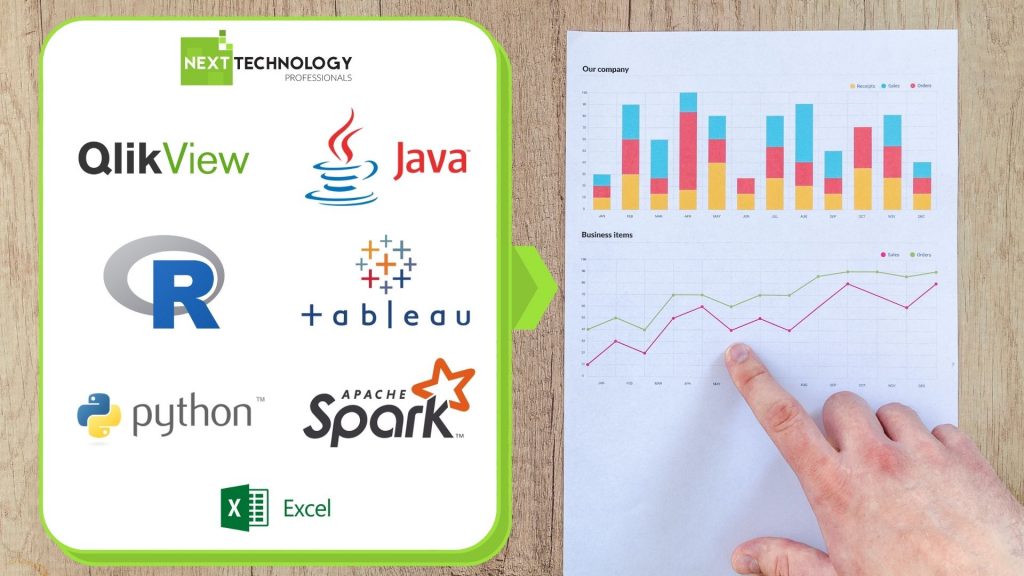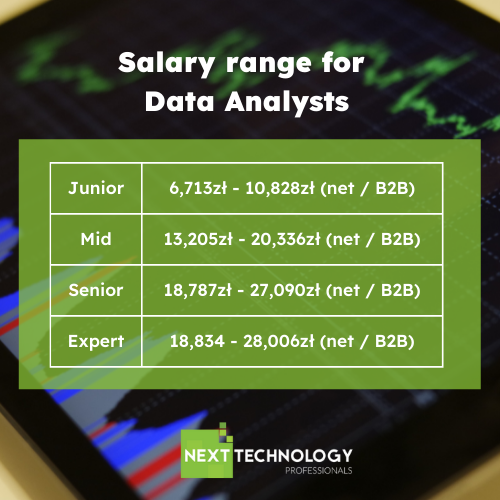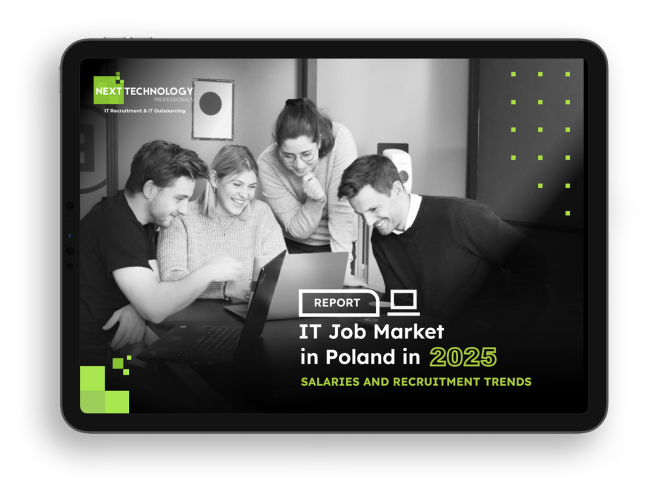With the rapid development of information media, the role of statisticians and Data Analysts, who are responsible not only for collecting information but also for processing it, has become increasingly important. As a result, the job market for Data Analysts has increased over the last few years. This is due to the fact that companies are collecting and acquiring more and more diverse data, which someone has to understand, process, analyze, draw conclusions, make various models and put into practice.
Raw data can rarely be used in a reliable and effective way, and this is due to its contamination, incompleteness, or inconsistency. Companies in various industries, therefore, turn to experts to collect, clean and validate the data and then prepare a report, usually visual, on the phenomenon of interest.
Working as a Data Analyst is ranked as one of the most up-and-coming jobs in the IT industry. If you want to know about other jobs of the future in IT we recommend our article dedicated to this topic.
Who is a Data Analyst and what are their responsibilities?
A Data Analyst is a person who collects and analyses data using various tools created for this purpose (e.g. MS Excel, QlikView, Microsoft Business Intelligence, Tableau), and then use it to prepare or improve business strategies and marketing plans of companies. A Data Analyst is a professionally trained person with well-developed mathematical skills, analytical skills and the ability to think logically. Data Analyst is one of the most important positions nowadays, as most of today’s companies are regularly looking to expand or at least improve their profitability. The most important job of a Data Analyst is to assess real-world risks, or more specifically, to analyze statistical data in order to evaluate the opportunities and risks of taking certain actions.
Typical responsibilities include, but are not limited to, using BI (Business Intelligence) technology and data analysis to extract the data needed, coordinating with other members of the IT team(s) and talking to stakeholders. A Data Analyst may also be employed to fix critical errors, perform so-called preliminary analysis or conduct financial research and analysis. Irrespective of the chosen position and the scope of activities, an employee can gain experience in the fields of data analysis in various ways.
In short, a data analyst analyses data collected from customers, the web, smartphones, sensors and many other sources by combining a range of skills (e.g. statistics, computer science and business knowledge).
Who can become a Data Analyst?
In principle, anyone with the right determination, well-developed analytical skills and the ability to think logically can become a Data Analyst. The job is also suitable for people with attention to detail and high communication skills – essential for working with business teams.
Education and development Data Analyst
In the analyst profession, skills acquired during studies in fields such as computer science, telecommunications, database engineering, or management will certainly be useful. Graduates of economic or mathematical studies can also be effective analysts. This does not mean, however, that people who graduated with a degree in the humanities have no chance of success.
It should be noted that a university diploma is not mandatory to work in this profession. On the market, there are many courses and trainings, the completion of which will certainly increase qualifications and allow for work and development in the Big Data industry. Such a course is offered, among others, by Coders Lab. It is worth emphasizing that a Data Analyst should be a professionally trained person.
Career development as a Data Analyst largely depends on the type and profile of the company. A common career path for Data Analysts is to develop into a management position such as Analytics Manager, Director of Analytics, or even Chief Data Officer (CDO). Once you’ve gained a few years of experience analyzing data for a company (or a few different companies), you can consider working as a Data Analytics consultant.
One of the advantages of this profession is that it is not limited to specific sectors. The benefits of hiring data analytics specialists are no longer only noticed by companies in the technology sector, but also by traditional sectors such as banking, consulting, insurance and telecommunications, which are currently looking for specialists in this field the most. Data analytics is also used in other areas, such as marketing, e-commerce, logistics and transport. It is also worth considering that data analysis is a relatively new trend.
Data Analyst, Data Scientist, or Data Engineer?

The profession of a Data Analyst is a very broad concept. In the field of DATA, there are 3 most popular positions: Data Engineer, Data Analyst and Data Scientist. What is the difference between them?
A Data Analyst is a specialist in data analysis. This person is primarily responsible for contact with the business: he must find out what data is needed. He or she creates visualizations that allow the company to interpret the data easily. In a nutshell: the Data Analyst’s job is to interpret current information to make it useful to the business. There is little modeling or implementation of machine learning in the role of a Data Analyst.
A Data Scientist is a programmer and data Analyst in one. In this job, it is important to have numerous competencies from many different specialties. It is desirable on the job market that a Data Scientist has mathematical and analytical skills, knows how to program, can present the analyzed data and draw concrete conclusions. He/she must also be very communicative and open-minded. This trait is important because a Data Scientist has to collaborate with people, present their models and conclusions to the company and then encourage colleagues to use them.
“Data Scientist is often indicated as the profession of the future, and the demand for experts who know both programming and data analysis is constantly growing. In this field it’s important to have knowledge about Big Data, Machine Learning (ML) and R or Python. In addition to good logical thinking skills, this job requires high level of communication skills.”
Dominik Kubiak – Senior IT Recruitment Business Consultant
A Data Engineer is a programming specialist. He/she uses modern IT tools in the field of designing and building databases, designing and building analytical solutions, implementing analytical and information systems in cooperation with specialists and managers from outside the IT domain in an organization.
In summary, the Data Analyst is responsible for taking actions that affect the current scope of the business. The Data Engineer is responsible for developing the platform on which the Data Scientist and Data Analysts work. In addition, the Data Scientist is responsible for extracting future insights from existing data and helping companies make data-driven decisions.
Java, Python, R – what technologies does a Data Analyst need to know?

The main technologies in which Data Analysts rotate are SQL, Python, artificial intelligence and machine learning. They use tools such as MS Excel, QlikView, Microsoft Business Intelligence (MS BI), Tableau, for example, to prepare or improve companies’ business strategies and marketing plans. According to our report “Prepare for IT recruitment process in 2022”, as many as 61% of jobs require SQL and/or Python knowledge, and the most important skills appearing in offers include:
- Big data
- Machine learning
- Python
- Apache Spark
- MS Azure
- AWS
- Java
- GCP
- Apache Hadoop
- Scala
- MS Excel
- R
- Tableau
However, it should be added that in this profession – apart from hard skills – soft skills are equally important, such as openness, communication skills, the ability to work in a group, inquisitiveness, the ability to draw conclusions, and good organization of work.
A Data Analyst must know how the business and the people around it work, prevailing rules, trends and commonly used solutions. He or she must have broad domain knowledge and be able to expand it quickly. Moreover, he/she should be creative and think analytically. His or her task is not only to identify the problem but also to solve it and draw the right conclusions. This work is not monotonous, quite the contrary. Creativity is required to come up with ideas, solutions and alternative actions in case of possible failures.
How to hire Data Analysts?
If your business is facing the challenge of harnessing and leveraging Big Data, it means that at some point you will need to hire Data Analysts. Hiring Data Analysts seems like a simple task, but it is not. On the one hand, you have a lot of competition for a limited pool of qualified candidates, and on the other hand, you need to make sure that your employee matches the needs and culture of your company. For this reason, searching for candidates on your own is very often time-consuming and may not bring the expected results
Big Data is driving all kinds of changes in the business environment and should probably also result in a change in the approach to hiring. Instead of the traditional approach to a recruitment task, consider using a new, data-driven approach such as the one described below.
Based on an article written by Jeremy Stanley, when recruiting Data Analysts, stick to the following principles:
- Make the hiring process mirror the reality of the hiring needs.
- Run objective evaluations first to minimize biases.
- Design the process to ensure that the candidate is sold on the idea of continuing the process.
- Make decisions as a team.
- Move fast.
The result of this recruitment redesign was a rather lengthy six-step process, which Stanley describes in detail in his article. This process included a homework assignment used to pre-screen Data Analysts and a full day spent working with the team. With all this data being collected on candidates, the team was able to make informed and appropriate decisions about selecting the best possible employees and act quickly to hire them before someone else did.

According to our report, the most desirable recruitment process should consist of 3 key elements:
1. The recruitment process has a maximum of 2 stages.
2. Verification of competencies takes place during a technical interview.
3. A contract is signed a maximum of 2 weeks after the employer receives the candidate’s CV.
The job market in Big Data
In 2020, demand for data analytics solutions increased by around 30%. According to TogetherData experts (the first Data Science House in Europe, which specializes in integrated Big Data analytics activities), one of the biggest challenges accompanying the implementation of data analytics solutions is the need for systematic integration of information. The importance of this aspect is growing, among other things, in the context of the systematic increase in the number of data sources that a typical company analyses or intends to analyze. Among the main factors that are catalyzing the demand for data analytics solutions, the authors of the analysis mention above the greater availability of services and solutions offered in the public cloud model. This is confirmed by estimates of global analyst firms. Cloud services are used by almost all of us. We keep a lot of data, files, and multimedia in them. Everyone is probably familiar with clouds such as Google Drive, Onedrive, or Dropbox.
When it comes to the fields of artificial intelligence and machine learning, the Future of Jobs study found that 73% of companies will use machine learning by 2022. This means that the demand for specialists in this field will far exceed the supply. Finding a good employee with machine learning experience or professional training is now like finding the proverbial needle in a haystack. A much higher number of job offers will probably also await Data Analysts themselves. Already in 2021, specialists in the area of BI (Business Intelligence) and data analysts belong to the group of very desirable, but difficult-to-obtain employees and can count on attractive salaries.
According to our report, the average salary ranges for Data Analysts are respectively:

A report by Coders Lab and Pracuj.pl says in Poland, 55% of job advertisements for a Data Analyst relate to cities with a population over 250,000. However, the demand for experts in this field is territorially diverse, and almost half of the advertisements came from smaller centers. The professional situation of analysts is favored by the fact that their work can be done remotely. According to the report, the number of all ads offering the possibility of remote work in 2020 increased by as much as 284 percent compared to the previous year. It is predicted that by 2028, 73% of all teams will have remote workers. If you want to know the pros and cons of this mode of work, we recommend our article dedicated to this topic.
Summary
The demand for Data Analysts is constantly growing, and as a result, more and more people are choosing to develop or retrain. They are currently among the most sought-after professionals on the labor market. Based on the information in this article, now you can see why Data Scientist has been identified as one of the most important professions in the 21st century. Experience in Big Data is not that important nowadays – or at least not the most important one – because the demand for analysts is so high that many companies cannot find specialists in this field. Therefore, this is an opportunity for juniors – novice Data Analysts who, with the right set of skills, can count on attractive employment. It should be emphasized that analytical competencies are appreciated in the labor market regardless of the position applied for. In the era of progressive digitalization, the ability to analyze data is a competitive advantage in relation to other candidates, and thus new employment opportunities open up.
If you want to hire Data Analysts – contact us. We will advise you and help you find the best Big Data Specialists.




